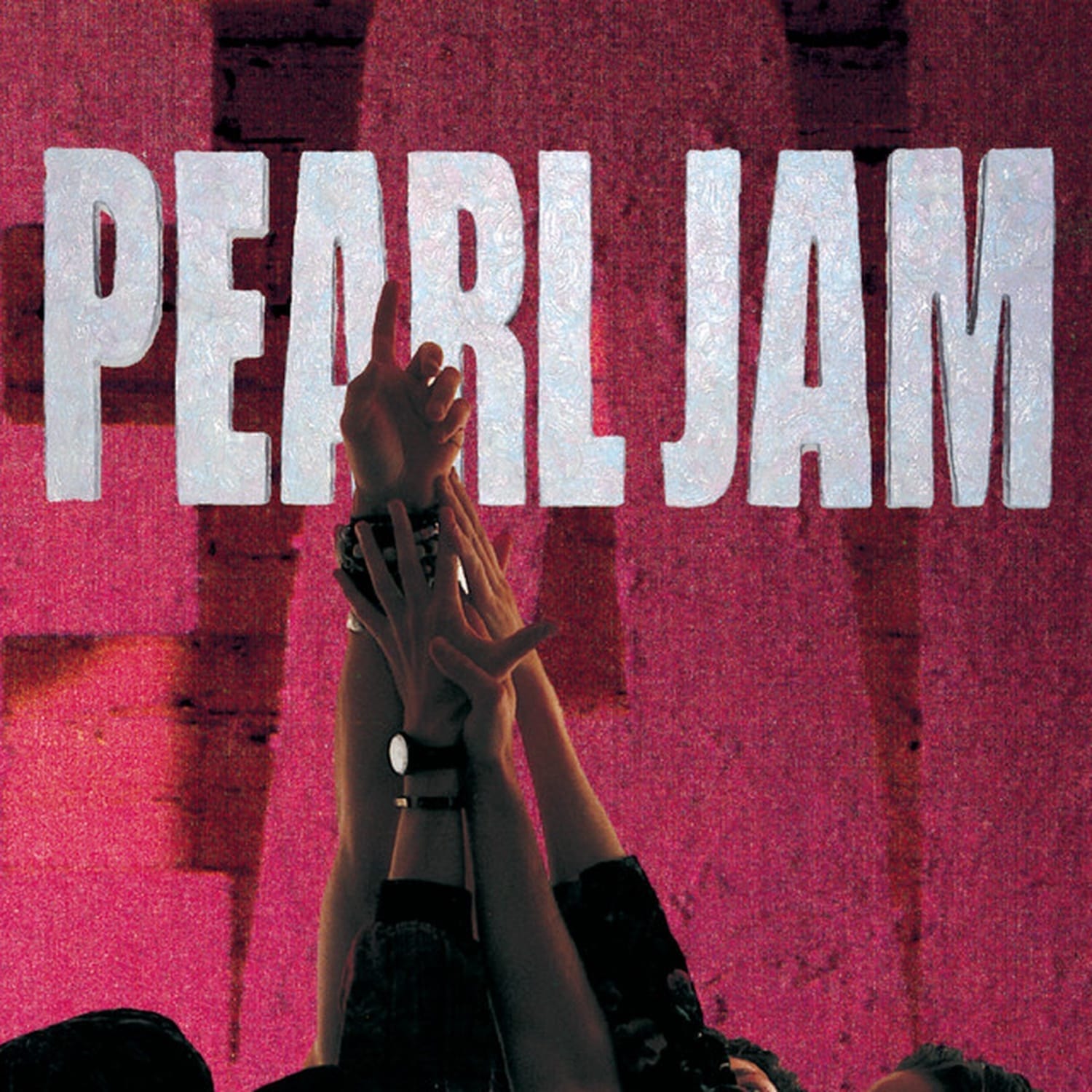
Introduction
Pearl Jam’s debut album, Ten, released on August 27, 1991, through Epic Records, stands as a seminal work in the history of rock music. Emerging from the burgeoning Seattle music scene, the album not only introduced the world to the raw, emotive power of grunge but also cemented Pearl Jam’s place as one of the most influential bands of the 1990s. With its blend of introspective lyrics and dynamic guitar work, Ten resonated deeply with a generation grappling with issues of identity and disillusionment.
| Attribute | Details |
|---|---|
| Release date | August 27, 1991 |
| Album title | Ten |
| Genre | Grunge, Alternative Rock, Hard Rock |
| Total runtime | 53:20 |
| Number of tracks | 11 |
| Record label | Epic |
| Recording studio | London Bridge (Seattle, Washington), Ridge Farm (Surrey, England) |
| Producer(s) | Rick Parashar, Pearl Jam |
The impact of Ten was profound, as it helped to define the sound of the 1990s and brought grunge music to a global audience. Its success paved the way for Pearl Jam’s long and storied career, influencing countless artists and shaping the direction of alternative rock. Guitarist Mike McCready once remarked, “It was a powerful time, and the music reflected that energy.” Producer Rick Parashar’s contributions to the album’s distinctive sound were also significant, as he helped to harness the band’s raw talent and translate it into a polished, cohesive record.
The Genesis of “Ten”
The story of Ten begins in the vibrant and rapidly evolving Seattle music scene of the late 1980s and early 1990s. This was a time when grunge was emerging as a dominant force, with bands like Nirvana, Soundgarden, and Alice in Chains gaining prominence. Pearl Jam, formed from the ashes of Mother Love Bone, found themselves at the heart of this cultural shift. The tragic death of Mother Love Bone’s lead singer, Andrew Wood, in 1990, deeply affected bassist Jeff Ament and guitarist Stone Gossard, prompting them to explore new musical directions.
Following Wood’s passing, Ament and Gossard began collaborating with guitarist Mike McCready, whose previous band, Shadow, had recently disbanded. Together, they recorded a five-song instrumental demo tape, which would eventually attract the attention of drummer Dave Krusen and vocalist Eddie Vedder. Vedder, a San Diego-based musician, was introduced to the band through a mutual friend, former Red Hot Chili Peppers drummer Jack Irons. Upon hearing the demo, Vedder quickly penned lyrics for several tracks, impressing the band with his emotive and introspective style.
With Vedder on board, the band—initially named Mookie Blaylock—began rehearsing and developing the material that would become Ten. The album’s creation was a collaborative effort, with all members contributing to the songwriting and arrangement process. The synergy between the musicians was palpable, as they worked to craft a sound that was both powerful and poignant. The following table outlines the key members of Pearl Jam and their roles in the production of Ten:
| Band Member | Instrument/Role |
|---|---|
| Eddie Vedder | Vocals |
| Mike McCready | Lead Guitar |
| Stone Gossard | Rhythm Guitar |
| Jeff Ament | Bass Guitar |
| Dave Krusen | Drums |
The financial aspects of recording Ten were managed with a modest budget, funded by the band’s record label, Epic Records. Despite financial constraints, the band was determined to bring their vision to life, often working long hours in the studio to perfect their sound. The album’s title, Ten, was inspired by the jersey number of basketball player Mookie Blaylock, reflecting the band’s admiration for the athlete. The album artwork, designed by Jeff Ament and Lance Mercer, features a striking image of the band members reaching upwards, symbolizing unity and aspiration.
Recording Process
The recording sessions for Ten took place primarily at London Bridge Studios in Seattle, Washington, a facility known for its warm acoustics and vintage equipment. Established in 1985 by Rick and Raj Parashar, London Bridge quickly became a hub for Seattle’s burgeoning music scene. The studio’s layout, featuring high ceilings and hardwood floors, provided an ideal environment for capturing the raw energy and dynamic sound that Pearl Jam sought to achieve.
Under the guidance of producer Rick Parashar, the band embarked on an intense month-long recording process in March 1991. Parashar, who had previously worked with Soundgarden and Temple of the Dog, brought a wealth of experience and technical expertise to the project. He played a pivotal role in shaping the album’s sound, contributing piano, organ, and percussion to several tracks. His collaborative approach allowed the band to experiment with different arrangements and textures, resulting in a rich and layered sonic palette.
While the exact details of the studio equipment used during the sessions are not fully documented, it is likely that the band utilized a combination of vintage and modern gear to achieve their desired sound. Based on the known specifications of London Bridge Studios at the time, the following table outlines the probable hardware and techniques employed during the recording of Ten:
| Equipment | Details |
|---|---|
| Console | Neve 8048 |
| Microphones | Assumed to include Shure SM57, Neumann U87 |
| Guitars | Fender Stratocaster, Gibson Les Paul |
| Amplifiers | Marshall JCM800, Fender Bassman |
| Effects | Overdrive, Delay, Wah Pedals |
The recording process was not without its challenges. Drummer Dave Krusen left the band shortly after the sessions concluded, due to personal issues that required him to enter rehabilitation. Despite this setback, the band persevered, traveling to Ridge Farm Studios in Surrey, England, for the album’s mixing sessions with engineer Tim Palmer. Palmer’s decision to mix the album at Ridge Farm, a converted farm with a relaxed atmosphere, contributed to the album’s organic and cohesive sound.
In addition to Ten, Rick Parashar’s impressive production portfolio includes several other notable albums. The following table provides a comprehensive list of albums produced by Parashar:
| Producer | Artist | Album | Year |
|---|---|---|---|
| Rick Parashar | Alice in Chains | Facelift | 1990 |
| Rick Parashar | Temple of the Dog | Temple of the Dog | 1991 |
| Rick Parashar | Blind Melon | Blind Melon | 1992 |
| Rick Parashar | Pearl Jam | Ten | 1991 |
Commercial Performance and Reception
Upon its release, Ten initially struggled to gain traction in the mainstream music market. However, as the grunge movement gained momentum, the album’s sales began to climb steadily. By late 1992, Ten had reached number two on the Billboard 200 chart, solidifying Pearl Jam’s status as one of the leading bands of the era. The album’s commercial success was driven by the popularity of its singles, particularly “Alive,” “Even Flow,” and “Jeremy,” which received significant airplay on radio and MTV.
The album’s performance on international charts was equally impressive, with Ten achieving multi-platinum status in several countries. It was certified 13× Platinum by the Recording Industry Association of America (RIAA), a testament to its enduring appeal and widespread acclaim.
Ten was also recognized with numerous awards and accolades, including four MTV Video Music Awards for the “Jeremy” music video, which won Video of the Year and Best Group Video in 1993. The album’s critical reception was overwhelmingly positive, with reviewers praising its powerful lyrics, dynamic instrumentation, and Eddie Vedder’s distinctive vocal delivery. However, the competitive landscape of the early 1990s saw several other significant albums released by contemporaneous artists, further fueling the grunge explosion.
Other albums released in 1991 include:
- Nevermind by Nirvana [30 million]
- Badmotorfinger by Soundgarden [2 million]
- Blood Sugar Sex Magik by Red Hot Chili Peppers [13 million]
- Out of Time by R.E.M. [18 million]
Singles and Track Analysis
The singles released from Ten played a crucial role in elevating Pearl Jam’s profile and introducing their music to a wider audience. The first single, “Alive,” was released on July 7, 1991, followed by “Even Flow” on April 6, 1992, “Jeremy” on August 17, 1992, and “Oceans” on December 7, 1992. Each single showcased the band’s ability to blend powerful lyrics with compelling melodies, resonating with listeners and critics alike.
The following table provides an exhaustive list of every song from the album, including track length and writing credits:
| Track Name | Length | Writing Credit |
|---|---|---|
| Once | 3:51 | Vedder, Gossard |
| Even Flow* | 4:53 | Vedder, Gossard |
| Alive* | 5:40 | Vedder, Gossard |
| Why Go | 3:19 | Vedder, Ament |
| Black | 5:43 | Vedder, Gossard |
| Jeremy* | 5:18 | Vedder, Ament |
| Oceans* | 2:41 | Vedder, Ament, Gossard |
| Porch | 3:30 | Vedder |
| Garden | 4:58 | Vedder, Gossard, Ament |
| Deep | 4:18 | Vedder, Gossard, Ament |
| Release | 9:05 | Vedder, Gossard, Ament, McCready, Krusen |
Note: Songs marked with * were released as singles. “Alive” charted at number 16 on the Billboard Mainstream Rock Tracks chart, “Even Flow” reached number 3, “Jeremy” peaked at number 5, and “Oceans” did not chart significantly in the US.

Influences and Legacy
Ten was shaped by a variety of musical influences, drawing from classic rock bands such as Led Zeppelin and The Who, as well as contemporary punk and alternative acts. The album’s anthemic sound and introspective lyrics resonated with a generation of listeners, and its impact on the music industry was profound. In the years following its release, Ten inspired a new wave of artists who sought to emulate its raw energy and emotional depth.
The following table outlines the key influences on Ten and the artists who were subsequently influenced by the album:
| Influences on “Ten” | Artists Influenced by “Ten” |
|---|---|
| Led Zeppelin | Foo Fighters |
| The Who | Silverchair |
| Neil Young | Creed |
Released in 1991, Ten coincided with a year marked by significant cultural and global events. The Gulf War concluded with a ceasefire in February, while the Rodney King beating in March sparked widespread outrage and calls for police reform. In August, the World Wide Web was made publicly available, revolutionizing communication and information sharing. The year also saw the dissolution of the Soviet Union, marking the end of the Cold War era.
Five Things about Ten
Ten is a treasure trove of interesting facts that add to its mystique and allure. Here are five verified facts about the album:
| Fact | Details |
|---|---|
| Original Band Name | Pearl Jam was originally called Mookie Blaylock, named after the NBA player. |
| Hidden Track | The album features a hidden track, “Master/Slave,” which bookends the record. |
| Album Title | The title Ten is a nod to Mookie Blaylock’s jersey number. |
| Producer’s Contribution | Producer Rick Parashar played piano, organ, and percussion on several tracks. |
| MTV Unplugged | Pearl Jam’s MTV Unplugged performance helped boost the album’s popularity. |
Media and Television Usage
The songs from Ten have been featured in various media, showcasing their lasting appeal and relevance. The following table lists the known media appearances of tracks from the album:
| Song Title | Media | Year of Appearance |
|---|---|---|
| Alive | Stumptown | 2019 |
| Why Go | American Gods | 2017 |
| Breath | Singles | 1992 |
| State of Love and Trust | Singles | 1992 |
| Release | Out of the Furnace | 2013 |
| Release | Tokyo Vice | 2022 |
| Even Flow | Only The Brave | 2017 |
| Even Flow | The Gryphon | 2023 |
| Even Flow | Super Pumped | 2022 |
Critical Reviews and Retrospectives
Ten has been the subject of numerous reviews and retrospectives, with critics praising its emotional depth and powerful sound. The album’s reissue in 2009 received particular attention, with many publications reflecting on its legacy and impact. The following table summarizes critical reviews of Ten and its reissue:
| Publication | Review Score | Notable Quotes | Source |
|---|---|---|---|
| Pitchfork | 6.7 | “Defined the alt-rock movement of the early ’90s.” | Pitchfork |
| Rolling Stone | N/A | “Raw emotional intensity and vocal prowess.” | Rolling Stone |
| Guitar World | N/A | “A defining album for the grunge movement.” | Guitar World |
After Ten
Following the success of Ten, Pearl Jam continued to evolve both musically and commercially. Their sophomore album, Vs., released in 1993, debuted at number one on the Billboard 200 and set a record for the most copies sold in its first week. The band became known for their fierce independence, famously taking a stand against Ticketmaster over ticket pricing and distribution practices.
Over the years, Pearl Jam has undergone several lineup changes, with drummer Dave Abbruzzese replacing Dave Krusen in 1991, followed by Jack Irons, and eventually Matt Cameron in 1998. Despite these changes, the band’s core members—Eddie Vedder, Mike McCready, Stone Gossard, and Jeff Ament—have remained committed to their artistic vision.
As of October 19, 2024, Pearl Jam continues to tour and release new music. Their most recent album, Gigaton, was released in 2020 to critical acclaim, showcasing the band’s enduring ability to innovate and connect with audiences worldwide.
Remasters and Reissues
The legacy of Ten has been preserved through various remasters and reissues, allowing new generations of listeners to experience the album’s timeless appeal. The following table outlines the different editions of Ten released since its original debut:
| Edition | Format | Release Date | Details |
|---|---|---|---|
| Legacy Edition | CD | March 24, 2009 | 2-disc set with original and remixed versions |
| Deluxe Edition | CD/DVD | March 24, 2009 | Includes MTV Unplugged performance |
| Vinyl Collection | LP | March 24, 2009 | 2-LP set with remastered audio |
| Super Deluxe Edition | CD/DVD/LP | March 24, 2009 | Includes memorabilia and live concert print |
Conclusion
Ten remains a cornerstone of rock music, its themes of identity, struggle, and resilience resonating as strongly today as they did over three decades ago. The album’s enduring significance is reflected in its continued influence on artists and its place in the cultural zeitgeist. As Eddie Vedder once noted, “The songs on Ten are as much about finding hope in the darkness as they are about confronting the darkness itself.”
For further reading, please visit the Wikipedia page for Ten, the official Pearl Jam website, and the Sony Music website.
Let us know in the comments what your thoughts are on Ten by Pearl Jam. Did we miss anything? Share your experiences and join the conversation!



